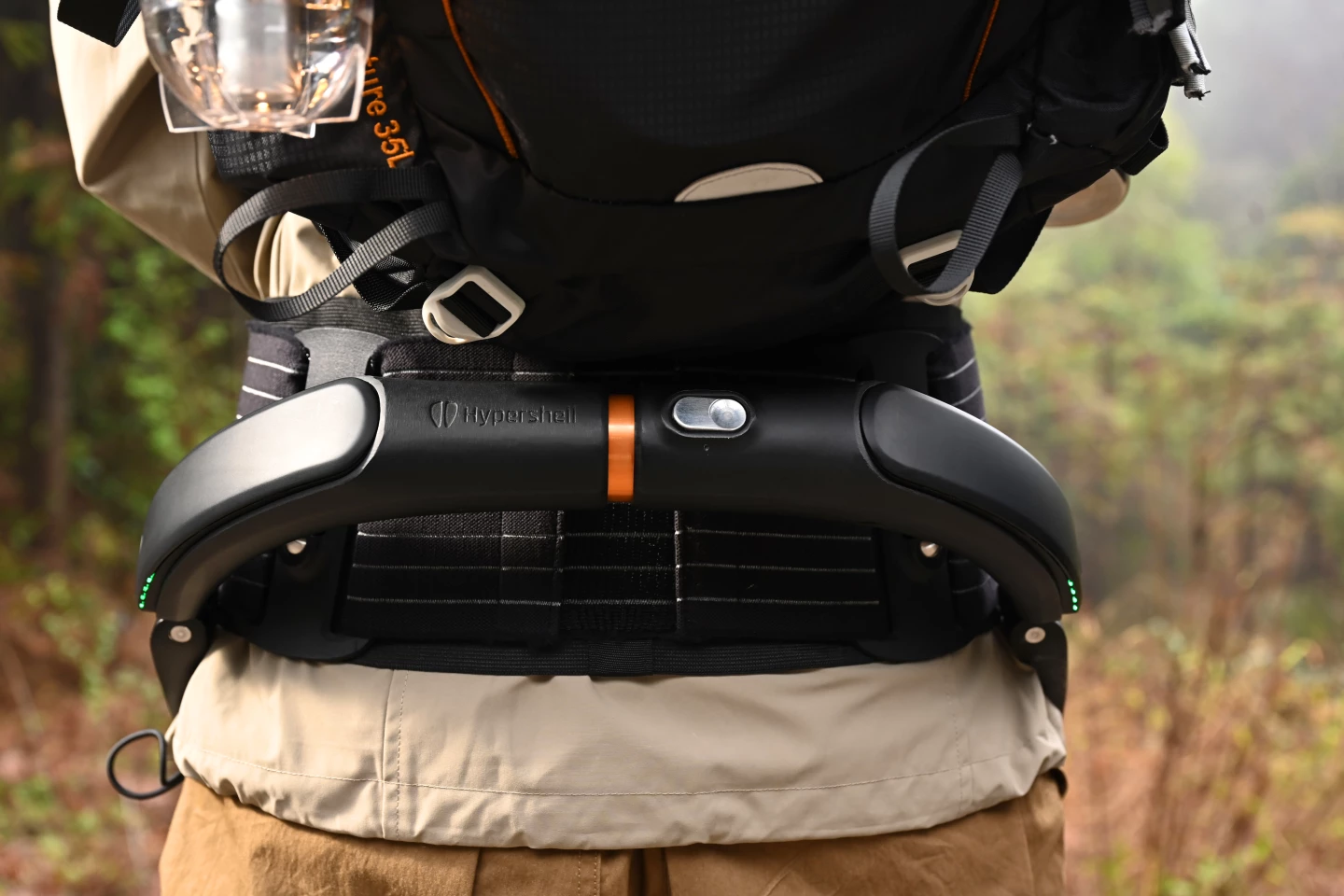Forget sports drinks and energy goos, Hypershell has a more concrete and powerful way of boosting your performance on mountain and trail. The Shanghai startup looks to free exoskeleton technology from the workplaces and battlefields where it's often found and send it out into the great wide open.
The company's new exoskeleton series channels the power of a horse into the legs of human adventurers, allowing them to explore farther, run faster, climb higher and enjoy more of the outdoors they yearn to experience. Average Joe becomes intrepid explorer.
Hypershell imagines its Omega exoskeleton platform as a sort of human power bank, keeping one's legs fresher and allowing them to venture out farther without becoming fatigued. Unlike some of the fuller bodied exoskeletons on the market, the 4.4-lb (2-kg) Omega is purpose-built around portability, folding into a 6.5-L form that can be lashed to or carried in a backpack. This way, users can choose to wear it for the entire journey or pack it in and suit up for particularly difficult legs of the trip.
While 4.4 lb is a lot to add to a backpack (many backpacking tents weigh less), the Hypershell Omega more than compensates. The lower-body device adjusts in size to fit the user's waist and legs, then uses its integrated 1-hp (800-W) permanent magnet synchronous motor to deliver assistive support that offsets up to 66 lb (30 kg) of weight. The user feels less weight from any load they're carrying and can walk, run or scramble more easily, helping to conserve energy and adventure longer. The exoskeleton supports running speeds up to 12 mph (20 km/h), offering a range up to 16 miles (25 km) per charge.
The Hypershell Omega has one active and eight passive joints for smooth, unrestricted motion. It relies on a multi-sensor architecture to track torque, position and force, monitoring leg motion and modeling gait in milliseconds via two onboard two processors. The device then tunes motor output through nine different modes, including walking, running, hill climbing and cycling. "Hyper mode" allows immediate push-button access to maximum system output. The AI engine intelligently predicts one's next move and seamlessly matches assistive output, learning and adapting to the user over time for more intuitive operation.
An exoskeleton of this form seems like it would be most useful for multi-day backpacking trips, as opposed to short afternoon hikes, but limited range could quickly drain the battery. Hypershell attempts to sidestep that problem by giving the exoskeleton two hot-swappable lithium battery packs integrated in the sides of the aluminum-magnesium chassis. Users can carry extra batteries and swap them as needed, so long as they're prepared to pack an additional 14 oz (400 g) per battery pair.
In addition to hikers and backpackers, Hypershell imagines its exoskeleton being used by mountain climbers, cyclists and trail runners, as well as outdoor professionals like photographers and search and rescue crews. Back in civilization, the Hypershell Omega could be equally useful for the likes of walking city streets or visiting theme parks.
Hypershell is trying to get production off the ground now, offering three different exoskeleton models based on the same Omega platform over on Kickstarter. Starting at a pledge level of HK$2,339 (approx. US$299), the base Hypershell Go has a smaller 400-W motor for a lower 7.5-mph (12-km/h) top speed. The standard Pro model has the specs described above and starts at HK$3,129 (US$399), while the lighter 4-lb (1.8-kg) Carbon model jumps up to HK$6,189 (US$790). Deliveries will begin in September if all goes according to plan.
Hypershell gives a closer look in the video below.
Source: Hypershell

















